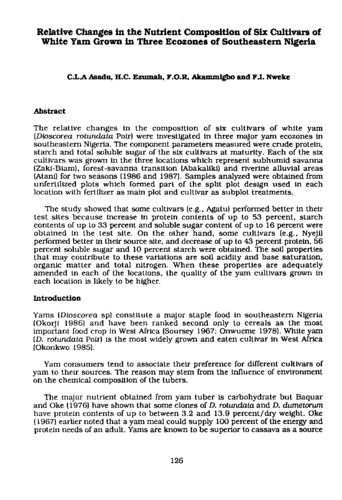Relative changes in the nutrient composition of six cultivars of white yam grown in three ecozones of southeastern Nigeria
Abstract
The relative changes in the composition of six cultivars of white yam (Dioscorea rotundata Poir) were investigated in three major yam ecozones in southeastern Nigeria. The component parameters measured were crude protein, starch and total soluble sugar of the six cultivars at maturity. Each of the six cultivars was grown in the three locations which represent su bh umid savanna (Zaki-Biam), forest-savanna transition (Abakaliki) and riverine alluvial areas (At ani) for two seasons (1986 and 1987). Samples analyzed were obtained from unfertilized plots which formed part of the split plot design used in each location with fertilizer as main plot and cultivar as subplot treatments. The study showed that some cultivars (e.g., Agatu) performed better in their test sites because increase in protein contents of up to 53 percent, starch contents of up to 33 percent and soluble sugar content of up to 16 percent were obtained in the test site. On the other hand, some cultivars (e.g., Nyeji) performed better in their source site and decrease of up to 43 percent protein, 56 percent soluble sugar and 10 percent starch were obtained. The soil properties that may contribute to these variations are soil acidity and base saturation, organic matter and total nitrogen. When these properties are adequately amended in each of the locations, the quality of the yam cultivars grown in each location is likely to be higher.

